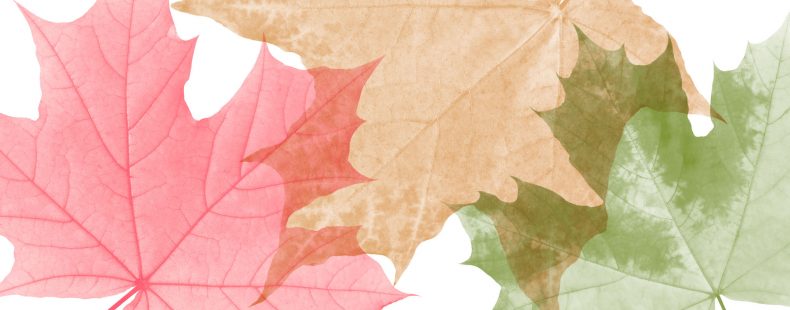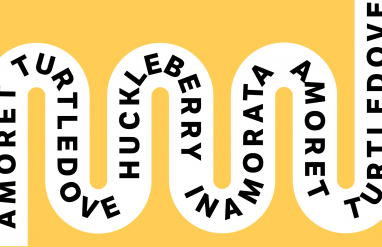There’s a lot to love about the fall. From football to yummy fall recipes to crunchy leaves dotting the ground, fall creates its own special ambiance. Sometimes it’s hard to find the right words to describe the feelings of warmth, coziness, and seasonal magic inspired by the fall, so we put together a special list of unique words for fall-lovers to help you do just that. These 13 words are some of the coziest, most joyful, and most wondrous words to go along with the fall season. Keep reading for the fresh and comforting seasonal vocabulary you need to (pumpkin) spice up your fall.
13 Fall Words Full Of Warmth—And A Bit Of Spice!

harvest
Fall is also known as the harvest season, meaning it’s “the season when ripened crops are gathered.” The word harvest calls to mind images of cooling weather, golden sunlight, and full fields of corn and pumpkins ready to be picked before the frost arrives. Harvest was first recorded as early as the year 950 from the Old English hærfest, a cognate of the German word Herbst, or “autumn.”
Learn more about the many names of the harvest season.

crisp
You know it’s fall when the leaves start changing and the air turns crisp and cool. Crisp means “brisk; sharp; clear; decided,” and it’s been in use in English since before the year 900. Crisp describes the chill that makes you grab your favorite wooly scarf, or the crunch of a freshly picked apple. It comes from the Latin word crispus, or “curled.”

umber
One of the best parts of fall is the colors. There are so many shades of red, brown, yellow, and orange that it’s almost impossible to describe them all. Luckily, there is no shortage of great color words to do the trick. Umber is the deep brown or reddish-brown of “an earth consisting chiefly of a hydrated oxide of iron and some oxide of manganese.” In fall, it’s a great word to describe crunchy brown leaves or warm cider. The word was first recorded In English as early as 1250, and it ultimately comes from the Latin word umbra, meaning “shade, shadow.”
Perhaps one of these shades of the color yellow will help you describe the glow of a fall sunset.

crepitate
Picture a cold, starry night spent sitting around a crackling fire. Crepitate is the word you’d be looking for. It means “to make a crackling sound; crackle.” As you sit by the crepitating fire and make s’mores, you might even regale your campfire mates with the rather hilarious etymology of the word. Crepitate was first recorded in English between 1615 and 1625, originally meaning “to fart.” The modern sense dates from the 1850s. The word ultimately comes from the Latin crepitāre, “to rattle, rustle, chatter, fart.”

ambrosial
Let’s talk about the delicious scents of fall: warm cinnamon, pumpkin spice, vanilla, fresh mums, and apple cider. They could all be described as ambrosial, a word that means “exceptionally pleasing to taste or smell; especially delicious or fragrant.” Ambrosial derives from ambrosia, “the food of the Gods” in classical mythology. It has been in use in English since at least 1590.

autumnal
Autumn is another word for fall, and autumnal is the word to use to describe all of your favorite things associated with fall. Autumnal means “belonging to or suggestive of autumn; produced or gathered in autumn.” Soups and stews can be autumnal. Pies can be autumnal. Leaves, pumpkins, and various other types of squash fit the autumnal bill, too. Autumnal comes from the Latin word autumnālis, and dates back in English to the mid-1600s.

cinnamic
If fall had an official spice, it just might be cinnamon. It’s a key ingredient in pumpkin spice mix, and a common accompaniment to apples, muffins, and other fall snacks. When you’re nibbling on these yummy treats, you might find it useful to describe them as cinnamic. Cinnamic means “of or obtained from cinnamon.” It’s been in use in English since at least the 1880s.
Take a walk through these cinnamon words, or words that are breathtaking in sight, sound, and meaning.

aglow
Fall is a season for things that glow. You might see jack-o’-lanterns aglow with candlelight, the moon aglow over the tree-lined streets, the fire aglow in the fireplace. You might have guessed by now that aglow means “glowing.” The word itself sounds almost as magical as the sight of glowing lights. It was first recorded in English before 1820.

gemütlich
German-speakers have a knack for creating complex words with surprisingly simple, useful, and cozy meanings. Gemütlich, pronounced in English as [ guh–moot-lik ], is no exception. This word, though harsh-looking, actually means “comfortable and pleasant; cozy.” For example, you might enjoy the gemütlich atmosphere at a fall festival. It’s been in use in English since the 1850s. The German Gemüt means “mind, mentality.”

deciduous
Falling leaves are one major indication that it’s fall. The trees that shed those leaves are deciduous. Deciduous means “shedding the leaves annually, as certain trees or shrubs.” It’s the perfect word for fall because it’s a reminder of the transitory nature of the season and the need to enjoy every last bit of the days ahead. In Latin, dēciduus means “tending to fall, falling.” The word was first recorded in English in the mid-1600s.

serotinal
It’s a slow transition from summer into fall, and depending on where you live, there may be days that seem to blend the two seasons. Serotinal means “pertaining to or occurring in late summer,” and it’s a word you might use to describe those last too-warm days or the first harvests of apples and pumpkins. The word is related to serotine, an adjective that means “late in occurring, developing, or flowering.”

hygge
The Danish concept of hygge has been gaining popularity in the US over the past few years, and fall seems like the perfect time to experience it. Hygge, pronounced [ hoog–uh ], means “the feeling of coziness and contentment evoked by simple comforts, as being wrapped in a blanket, having good conversations, enjoying food, etc.” Basically, almost everything on your fall bucket list relates to hygge. And even though hygge is trendy now, it’s actually been in use in English since the 1960s.

Study these cozy fall words, and have them memorized just in time for the new season. Our convenient word list can help. Grab a latte, and use our list to memorize the definitions with digital flashcards, practice your spelling with our spelling quiz, and then take our multiple choice fall vocabulary quiz to put your new knowledge to the test.
Let the autumnal atmosphere inspire you to check out these uplifting and inspiring words.














